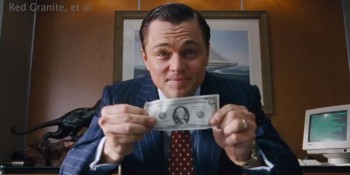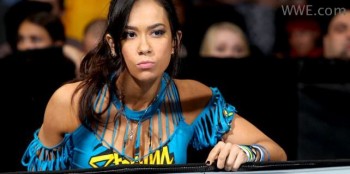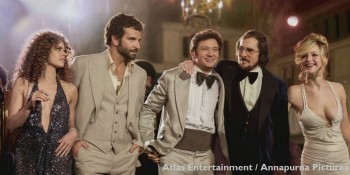We are fortunate to live in a world where cancellation doesn’t always mean the end of our favorite television shows. Series like Buffy the Vampire Slayer and Angel live on in comic book form. A year ago, Rob Thomas launched a record-breaking Kickstarter campaign for a Veronica Mars film, which will be in theaters March 14, nearly a year to the day after that historic Kickstarter launch. Fans of the Fox program 24 were delighted to hear the show would be back for a limited run this spring, four years after it ended. There are even rumors swirling around the Internet about the cult hit Farscape getting a film, possibly sooner rather than later.
Jumping on the series revival bandwagon, NBC announced last weekend they would be bringing back their sci-fi drama Heroes for a limited 13-episode run sometime in 2015. The concept of Heroes — ordinary people suddenly discovering they have superhuman powers — was interesting, and the first season of the show was excellent. The first season episode “Company Man” still stands out in my memory as a brilliant hour of television. However, season two came along with new characters that changed the entire show. Then the 2007-08 writers’ strike happened, and everything just went downhill from there. I stayed with the show until its disappointing season four finale and was grateful NBC cancelled the show, thus making the decision for me whether or not to watch season five.
All of this makes NBC’s decision to bring back Heroes a little perplexing. Why would they decide to bring this show back now, especially after it ended at such a low point, and having already alienated most of its fanbase? It makes sense for Fox to bring back 24, a show fans still love, but why Heroes? Why not a show fans would actually like to see again, like The West Wing?
Of course, there are logistical and financial hurdles, but we can dream, can’t we? It got me to thinking: What other shows would I like to see come back, even if just for a limited run of 13 episodes?
Alphas (SyFy)
If NBCUniversal really wanted to bring back a show about people with superhuman abilities, why not turn to one of their other properties and give Alphas a real conclusion? This is a show that fans actually want to see return and receive a proper send-off, tying up all the loose ends left by the second season finale. I feel like the show was just finding its footing and then ended with a cliffhanger that will never be resolved; and there’s nothing more frustrating than an unresolved cliffhanger. At the very least, they could give us a movie to wrap up the series.
Pushing Daisies (ABC)
While Pushing Daisies writers at least had enough warning of cancellation to give viewers some closure, it still felt rushed and was disappointing to say goodbye to this show. I loved the quirkiness, the vibrant color palette of the sets and costumes, and the wonderful cast. The show was a critical darling and received decent ratings early in its first season, then became a victim of the writers’ strike. ABC opted not to bring the show back after the strike, instead waiting until fall to debut season two. By then, 10 months had passed and the show lost a lot of viewers. It wasn’t even given a full 22-episode second season, only airing 13 episodes. A comic series was in the works through DC Comics imprint WildStorm; however, DC shut down WildStorm before the comic was ever printed. There’s been talk of a Pushing Daisies revival — especially after rumors surfaced about series creator Bryan Fuller discussing the ins and outs of a Kickstarter campaign with Thomas after the Veronica Mars launch — but nothing has been confirmed.
Twin Peaks (ABC)
Twin Peaks is another well-loved series full of quirky characters that was cancelled too soon. While a prequel film was produced after the series’ cancellation, what fans really want to know is what happens to Kyle MacLachlan’s Special Agent Dale Cooper after the cliffhanger in the second season finale. The show itself has become a staple of pop culture, with references still being made in current television shows: the USA series Psych even did a tribute episode a few years ago, titled “Dual Spires,” which featured several original cast members. David Lynch’s style is unique and difficult to pin down to a certain genre, and it would be a welcome change from all the reality television and formulaic crime dramas currently on television. The year 2015 would also be the perfect time to bring the series back, as it would mark 25 years since the show’s original premiere.
The Pretender (NBC)
Does anyone else still wonder whatever became of Jarod? NBC cancelled The Pretender after four seasons, and then TNT aired two made-for-TV movies that still didn’t answer all the questions fans had. If anything, they just brought up more questions. I’m definitely more interested in learning what’s been happening with Jarod and whether the Centre is still in business than I am in meeting new Heroes. Besides, Michael T. Weiss hasn’t been too busy lately, and I’m sure Andrea Parker could take a break from Pretty Little Liars long enough to create at least a couple more movies, if not a miniseries.
Moonlight (CBS)
Moonlight was a show that premiered early in the vampire craze — perhaps too early. It premiered on CBS a year before HBO introduced us to Vampire Bill and Sookie on True Blood and Twilight opened at the box office. The show, starring a then-relatively-unknown Alex O’Loughlin and Veronica Mars’ Jason Dohring as modern vampires who could walk in daylight, also suffered from the writers’ strike as its first season was shortened to just 16 episodes and CBS opted not to renew it for a second season. While the series finale didn’t entirely leave fans hanging, there were still a few loose ends that could be used to create a miniseries based on the show. Sure, O’Loughlin is currently starring in Hawaii Five-O, but who wouldn’t rather see him return to being broody vampire Mick St. James? Plus, Dohring and Sophia Myles don’t seem to be too overwhelmed with work these days.
Freaks and Geeks (NBC)
Another show on a lot of “Cancelled Too Soon” lists is NBC’s Freaks and Geeks, which first aired back in 1999. The show was cancelled after 12 episodes, and fans had to rally to get the three of remaining completed episodes aired. The final three didn’t air on television until Fox Family Channel aired the show in 2000. Like many good shows canceled too soon, Freaks and Geeks has developed a devoted cult following in the years since it originally aired. Most of the cast, which included James Franco, John Francis Daley, Linda Cardellini, Seth Rogen, and Jason Segel, has become much more recognizable since then, but surely a short miniseries or two-hour movie wouldn’t be out of the question. Let’s see what Lindsay’s (Cardellini) high school reunion is like, because we all know those can be just as awkward as high school itself.
Firefly (Fox)
While Firefly has had more life since its cancellation than most shows — in truth, it will never truly die — I just felt this list wouldn’t be complete without including one of fandom’s most unjustly canceled series. Fox essentially self-destructed this series from the beginning, by opting not to air the original pilot episode first. Viewers were a little confused by the order of the episodes, but that didn’t prevent fans from instantly falling in love with the show. Despite only having one season of 14 episodes, some of which never even aired during its initial run, the series maintains an extremely loyal fanbase that only grows as more and more people are introduced to the show. Since cancellation, the series has lived on in several comic series as well as the major motion picture, Serenity, which finally answered many of the questions surrounding the character of River. In 2012, fans at Comic-Con were able to celebrate the 10th anniversary of the series with the cast as well as creator Joss Whedon. While most of the cast has been busy these last few years, and Whedon is spending most of his time with some small project about superheroes calling themselves Avengers, I’m sure if given the chance they would all love to bring these characters back to life again.
These are just a few shows deserving a second chance that I came up with. Feel free to add your own in the comments below.










